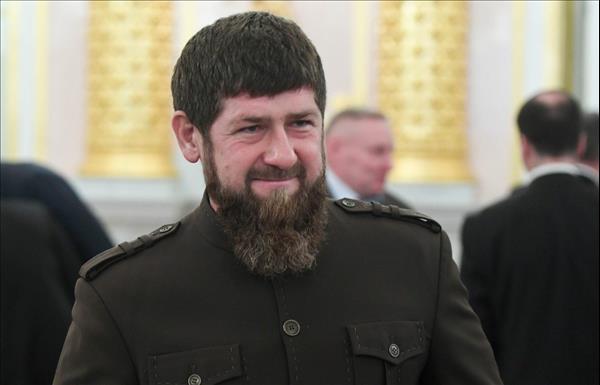
Putin Faces Mobilization Backlash In North Caucasus
Vladimir Lenin once said,“There are decades where nothing happens, and there are weeks where decades happen.” The latter certainly seems to be the case in Russia now.
As President Vladimir Putin's faltering invasion of Ukraine stumbled on, September saw one Rubicon crossed after another, beginning with the stunning rout of Russian forces in Kharkiv Oblast and continuing with Putin's announcements first of and then of the of the Russian-occupied parts of Ukraine.
As with nearly every other aspect of Putin's war, however, mobilization has not gone according to plan. While tens of thousands of draft-eligible men have flooded out of the country, in some areas mass against the draft, despite the severe repercussions threatened.
The center of these protests: the North Caucasus, the southern fringe of Russia's empire.
Shortly after Putin's mobilization declaration on September 21, showing disaffected men being rounded up by recruitment officers. As with most of Russia's manpower in Ukraine, these new recruits disproportionately came from the country's backwaters: the Far East and the ethnic-minority republics in the Caucasus and along the Mongolian border.
Protests mountThese regions had already formed the backbone of Russia's“shadow mobilization” over the past six months of war. The Russian military and private contractors such as the Wagner Group had canvassed these areas heavily, offering high salaries for contracts, with correspondingly high regional death tolls in the war.
Since the official mobilization, these efforts grew to sometimes all-encompassing heights: Videos of driving through Derbent, Dagestan's third city, calling for all able-bodied men to report immediately to the recruitment office attest to this.
But the North Caucasus has not lain down quietly. Within days of the mobilization order, protests across Dagestan sprang up, calling locals to resist the campaign.
women screaming at recruitment officers to release their husbands and sons, with some women going so far as to state this was“Putin's war, not ours” and that“we [Russia] attacked Ukraine, not the other way around” – an extremely brave public act in 2022 Russia.
Other protests were more violent: Demonstrators in Khasavyurt, Dagestan's second-largest city, had to be dispersed by gunfire into the air.
Russia's recent history shows how dangerous this moment is for Putin. The Russian president began his tenure by invading Chechnya, bringing Moscow's rule back to the region using brutal tactics now repeated in Ukraine. Putin then became engaged in a struggle with a sprawling insurgency across the North Caucasus, one that saw local militants regularly range into Moscow, with devastating effect.
It took more than 15 years of concerted effort by the then-undistracted Russian security services to crush the insurgency.
Depressed regionThe present recruitment drive threatens to upend this entire arrangement. While Dagestan, Chechnya and other areas of the North Caucasus may have been violently suppressed, the socio-economic problems that led to the insurgency's popularity were never addressed.
All seven of the ethnic republics that constitute the Russian North Caucasus suffer from severe economic depression: Development is sparse and inconsistent, finding a decent job nearly impossible, and the federal funds that subsidize the region largely drained by corrupt officials.
This is to say nothing of the social aspect: The people of the North Caucasus are the targets of deep-seated racism within Russian society (and especially Russian government and security organs), finding themselves alienated and ghettoized even when they move to Moscow, Krasnodar or elsewhere in search of job opportunities.
Add in the new reality that the state is now actively dangerous to one's physical well-being, and you now have all the elements that made the original insurgency so appealing to disaffected populations to begin with.
While these issues plague the region as a whole, there is nowhere they are quite as acute as in Chechnya.
The republic received the most Faustian bargain of all, as Putin made a simple deal with its Kremlin-installed head: Take the government's money and keep the calm by any means necessary.
Ramzan Kadyrov, who has ruled Chechnya under this arrangement for nearly two decades, is a strongman whose cruelty knows nearly no bounds, and he has tortured and executed his territory into obedience.
Even here, however, the cracks are beginning to show: Around 100 Chechen women demonstrated in central Grozny against the mobilization, the first open protest in Kadyrov's entire tenure. All of them were quickly arrested (and their husbands and sons sent off to serve in Ukraine), but Kadyrov himself has also been that his government is carrying out mobilization, even as it continues to do so.
In Ukraine itself, meanwhile, pro-Ukrainian Chechen formations have announced that they intend to take the fight back home to Kadyrov after Russia is expelled from Ukrainian territory. Chechnya's status as“the most peaceful region of Russia,” as Kadyrov likes to boast, is teetering ever closer.
All of this portends a slow-burning catastrophe for Putin. Even others smell the blood in the water.
In a , Ukrainian President Volodymyr Zelensky, standing in front of a statue of the 19th-century anti-Russian Dagestani warlord Imam Shamil, called for North Caucasians to resist and not to“die for Putin's imperial war.”
Among Chechens in particular, one hardly meets a member of that nation who does not believe a third Chechen war (when Putin and Kadyrov are weak enough) is in the offing.
The North Caucasus is where Putin began and solidified his reign over Russia. It would be a fitting place for it all to unravel at the end.
This article was provided by , which holds copyright.

Legal Disclaimer:
MENAFN provides the
information “as is” without warranty of any kind. We do not accept
any responsibility or liability for the accuracy, content, images,
videos, licenses, completeness, legality, or reliability of the information
contained in this article. If you have any complaints or copyright
issues related to this article, kindly contact the provider above.
















Comments
No comment